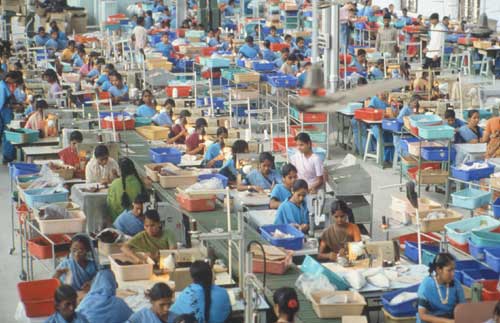In the last decade, female labour force participation (FLFP) rate in India has fallen significantly by 10 percentage points, according to ASSOCHAM-Thought Arbitrage Research study.
As we move forward, and there is an increase in disposal incomes, job opportunities, education and healthcare – all factors that economic growth would normally have an impact on, we would expect more and more women to join the workforce. However, it seems there has been a reverse growth happening in India.
Between 2000 and 2005, the share of women workforce increased from 34 to 37 per cent. However in the following 10 years, the women worker’s ratio declined to 27 per cent – a decline of 10 percentage points. Compare this to other BRICS counties and India stands at the bottom. In fact there is a huge gap between India and the next BRICS country, South Africa where the FLFP (female labour force participation) rate is 45 per cent. For Russia, the figure is 57 per cent and for Brazil it is 59 percent, while in China, the FLFP rate is 69 per cent.
What is even more interesting is that certain Indian states which are rank low in terms of GDP, the FLFP rate is higher than the national average. These include Chhattisgarh, Sikkim and Himachal Pradesh. Andhra Pradesh is the only state which ranks high both as per GDP and FLFP.
There are certain primary reasons for low participation of women in the labour force like lack of access to higher education among women, dearth of opportunities to work and even lack of flexibility in working conditions tends to dissuade women from joining the labour force as they turn to their domestic duties. However, one big reason for this declining FLFP number is marriage. It decreases the probability of FLFP by about eight per cent in rural areas and more than twice as much in urban areas.
Further, the gap between rural male and female labour force participation in India in 2011 stood at about 30 per cent while in urban centres gap was more pronounced (about 40 per cent). “This can be attributed to social and cultural curtailment and often the lack of work opportunities.”
The study suggested promoting skill training programmes for women, setting up child care centres in large numbers, ensuring women safety and security in every sphere through efforts by both the Central and state governments and other such measures are imperative to boost female labour force participation in India.
Considering that even a 10 per cent increase in FLFP rate can boost gross domestic product (GDP) by 0.3 per cent, according to The United Nations Economic and Social Commission for Asia and the Pacific (ESCAP), it is imperative that policy measures and programmes are introduced and implemented to increase the participation of women in the workforce in India.



